The main IJN torpedo bomber of the interwar
The Mitsubishi B1M was a Japanese torpedo bomber of the 1920s. It lasted in service more than planned, and contributed to shape Imperial Japanese navy early carrier-borne strikes tactics. It was originally designated the 2MT, and was designed by Mitsubishi’s chief designer Herbert Smith and his team, formerly from Sopwith. Development took longer due to the intitial 1MT prototype being a failure as the first Japanese aircraft carrying and launching aerial torpedoes. The 2MT became the B1M, laying the work for other models to follow, until the WW2 “Kate”, 3rd generation of the type. Its origins went back to the same program that initiated the 1MF fighter, but the model would ultimately soldiered on for most of the interwar (aslmost until 1937) due to the lack of suitable replacement.
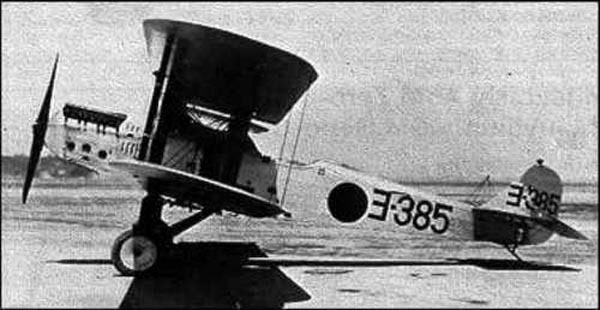
Mitsubishi 1BM
Project development
In 1921, the IJN staff ordered indeed Mitsubishi to develop three types of aircraft: A carrier-based fighter, a carrier-based reconnaissance and a carrier-based torpedo bomber, all three intended for the new airvcraft carrier in construction, IJN Hosho. These planes were supposed to form its first air group, and be ready for the commissioning on the ship planned for 1923-24. Mitsubishi turned to the former designer of the Sopwith company, Engineer Herbert Smith. The latter came in Japan with the prospect of designing not one but all three aircraft, helped by Japanese engineers. Smith brought with him however seven more picked-up British aviation specialists. His “dream team” set to work first on the 1MF.
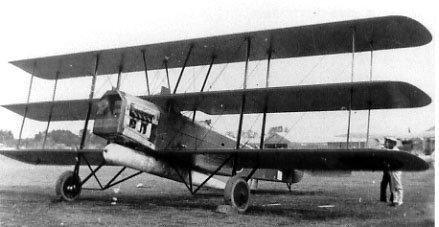
The mediocre 1MT, sole triplane of the IJN
The first two aircraft, Mitsubishi 1MF fighter and Mitsubishi 2MR reconnaissance aircraft turned out to be very successful and remained in service for a long time. The third, and arguably more difficult torpedo plane to design, was the 1MT1N. Lifting the heavy torpedo proved a daunting task indeed. To allow it to carry such payload, Smith decided to use a triplane scheme. This became the “Type 10” prototype, first and only triplane ever built in Japan. However, such a scheme precluded its use onboard an aicraft carrier, starting with the wings, difficult to work with. The model was way too cumbersome and bulky. Despite favorable reviews however from naval pilots that tested it, the 1MT maneuverability was poor and speed not stellaer. The Imperial Japanese Navy decided to abandon the Type 10 program after building just 20 aircraft. In between, Smith worked on an alternative design base don the stretched-out 1MF mixed with some aspects of the 2MR. This became the Mitsubishi Type 13, a completely remodelled three-seat biplane.
The prototype designated 2MT1, made its first flight in January 1923 at Mitsubishi test airfield close to the factory. It performed “light” tests and agility (no payload yet). Then came a second round of trials with a heavy dummy payload, to test its flying caracteristics, and then the “real thing”, a ventral aerial torpedo. It seems whatever the results, the model was officially accepted for service with the Japanese Navy, but with the designation Type 13 from the army, related to the 13th year of the Taishō era Calendar.
This time it was parised by the pilots, having the lifting capacity with some reserve for agility and speed. Moreover, its folding wings authorized its use on an aircraft carrier. It flew later in front of an IJN delegation and impressed the staff, soon receiving approval. Under the designation B1M1, the first batch was accepted into mass production for the Japanese Navy, redesignated Type 13 Carrier Attacker. It had an all-wood construction but was powered by a 450 hp Napier “Lion”. In later versions this was a 500 hp Hispano-Suiza, both with a two-blade wooden fixed-pitch propeller.
B1M design

Blueprint, 3 views of the type, modified by the author from the Otori
The Mitsubishi Type 13 was a single-bay biplane of classic 1920s structure with straight struts and fixed, but much renforced undercarriage, standard for the time. The construction called for a tubular framing, with canvas over the sides and belly of the rear section, but the whole upper section of the bay was covered with aluminium. Although the early prototype shared a few caracteristics with the 1MF, like the tail, and the engine hood and canopy, it was much more than a simple stretched-out 1MF. The final plane was much longer and wider, weighting twice as much. The tail skid (no tailwheel) was combined with the arrestor hook for aircraft use. Its reach was limited, but the entire tail skid/hook could be further lowered via a cable-actioned lever.
Its crew comprised a pilot and a navigator, the later doubling as machine-gunner for defense. The observer was also tasked to release the payload at the optimal time. So he was also the bombardier and torpedo servant. This changed with the later version, with a third crewman seated in the same “bathtub” as the rear gunner, but facing forward, so back to back with the gunner.
The large wings were far more design for sustention than speed as on the fighter. They were renforced each by no less than three series of two struts, the inner pair being even doubled for extra rigitity and a pair or half-struts attached from behind the aluminium cover of the bay provided extra rigidity for the central wing section. The ventral wheeltrain was also very large, and butressed by extra torsion bars and coils, but it was also low, allowing extra gap for stable landings, which was cucial for deck landings. They were really sturdy but would never allowed a plane to land with a torpedo or bomb still attached.
Engine
The original engine, used on the prototype and preserie was the trusted Napier Lion engine. Thuis liquid-cooled model was about to deliver and output of 500hp. However the next variants called for a domestically developed 450hp Mitsubishi Hi engine. Although rated woth less horsepower, torque was the same and performances were kept also the same. The Type 13 was repeatedly tested with its heavy payload, a single 18in aerial torpedo, but also in alternative 250kg of bombs, both 125 kgs models attached under the belly.
Armament:
- Two fixed type 97 7.7 mm (0.28 inches) light machine gun on the nose
- Two mobile defensive type 97 7.7 mm on a flexible mount
- One 18-inches torpedo (457 mm) under the belly launching frame
- 240 kgs bombs (2 x 120 kgs or 4x 50 kgs) under the wings
From 1931, the B1M likely used the 45 cm (17.7″) Type 91 (1931) Mod 1 torpedo: Weighting 1,728 lbs. (784 kg) it was 208 in (5.275 m) long, with a negative buoyancy of 227 lbs. (103 kg), carrying an explosive charge of 331 lbs, or 150 kg Type 97. It was powered by a Kerosene-air wet-heater system rated for 140 HP, up to 2,200 yards (2,000 m) at 41-43 knots.
The army cousin: Mitsubishi 2MB1
All in all, despite its late entry into service and unusually long career, the B1M was successful enough to be also adopted by the Army air force as the Army Type 87 Light Bomber 2MB1. The latter soldiered during the Sino-Japanese war and was present during the Invasion of Manchuria in 1931, but in 1935 it was considered obsolete relegated to training duties. This close cousin first flew in 1926 and 48 were delivered.
Variants
The Japanese Navy service acepted it initially as the Type 13-1 carrier-borne attack aircraft, but soon the new letter system was adopted and it became the B1M, where “M” stands for Mistubishi and “B” for bomber (or torpedo bomber).
-2MT1 (B1M1) or Type 13-1 Carrier-Attacker: This was the prototype and preserie version, which flew with a 500hp Napier Lion engine. and the “old style” tail also seen on the early 1MF fighter. The Navy long formal designations was Type 13-1 Carrier-Attacker. None were still in service in 1930.
-2MT2/2MT3 (B1M1) Having the same Type 13-1 Carrier-Attacker desighation, this model improved on many points, notably a redesigned tail, closer to the 1MF2/3 types. The naval designation 2MT2 and 2MT3 represented minor changes. However production from there was ramped-up with 196 B1M1s delivered total.
-2MT4 Otori This was a prototype twin-float reconnaissance version, to be carried on ships. Three only were for tests, which apparently were not satisfactory, ending the project. The fate of these three models is unknown.
-2MT5 & 3MT1 (B1M2): Second version, fitted with a 500hp Hispano-Suiza V12 engine, built under licence by Mistubishi as the HI. A total of 116 of these 3MT1 (B1M2) were built, with a redesigned tail, reworked rear observer cockpit, reinforced wheeltrain, reworked underbelly launch system and tailhook, and many other details. The 2MT5 Tora itself was a single prototype from which was derived the production 3MT1.
-3MT2 (B1M3): Called also in the navy ordnance “Type 13-2-2 Carrier Attacker”, this was the ultimate version, this time a three-seater: The rear cockpit was lenghtened forward in order to accomodate a seated observer facing forward, and the gunner behind. It was also fitted with a revised engine, a 600hp Hispano-Suiza V12. Also the two fixed forward machine guns were judged unnecessary and one was removed. In all, only 88 of these 3MT2s were delivered in 1929-30, but followed by 40 more built by the Hiro Arsenal, so 128 in total, raising the serie to 440 B1Ms. Being delivered so late meant they were still in service during the Shanghai incident, but there were other reasons as well.
It should be noted as former versions were removed from service, they ended on the civilian market and were large enough to attract attention. This led to the ultimate model, the Mitsubishi T-1.2 which in fact encompass all variants of the B1M as surplus civilian conversions. Some were used as postal planes, or for short flights between home islands, each fitted with an enclosed passenger cabin and up to three seats located behind the pilot, with portholes.
Why the B1M soldiered for so long ?
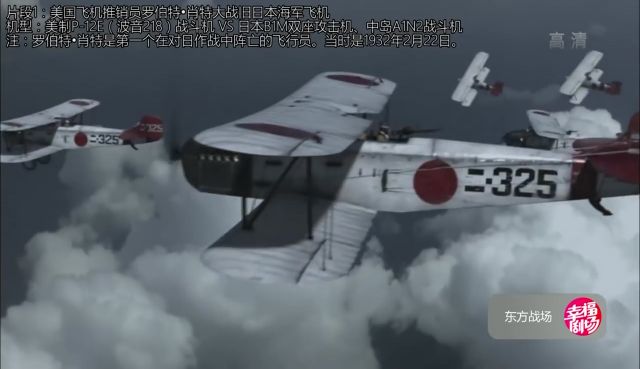
Extract from the Chinese 2015 TV show “Eastern battlefield” (Dōngfāng zhànchǎng) showing notably the event with Robert Short.
The B1M indeed remained in service much longer than initially planned. In fact, the Navy already staring preliminary work on its successor, replacement aircraft for 1927 also by Mitsubishi. But the B2M was delayed time and again, in fact so much that it was not ready to make its first flight before 1932, and initials tests were disappointing. In between the Navy also tested the Yokosuka B3Y which competed against the B2M based on the 7-shi 1933 specifications. But that model also ended as a failure. The IJN was now without suitable aircraft to replace the B1M, which had no alternative but to be kept as long as possible.
The B1M was eventually replaced by the Yokosuka B4Y around 1934-35, which was another biplane, but corresponding to the much later 9-Shi specifications. It was even seen as a stop-gap model, since Nakajima worked on a promising, very modern monoplane: This proved to be the famous B5N ‘Kate’, entered service in 1938. When the prototype flew, the B1M was still used in training units. So in a sense, the true successor of the B1M was the WW2 B5N…
Although the new B1M was still not impressive in terms of flight performance, the crews loved its reliability and ease of maintenance. The basic design became the basis for various modifications, until the ultimate B1M3. Despite the fact that by the mid-1930s, B1M aircraft were outdated, some of them continued to be used in the Japanese Navy until 1938, les because of outstanding qualities than simply the lack of a significant replacement. All later projects of carrier-based torpedo bombers failed indeed, proving to be of all aicraft types in use in the IJN, the most dificult of all. It should also be noted that despite the clear antagonism between the army and the navy, the Type 13 torpedo bomber demanded that Mitsubishi develop an army version due to the very high cost of the army project Mitsubishi 2MB2 “Washi”, developed by the German designer Alexander Baumann. This army version was designated Type 87, or Mitsubishi 2MB1, a light bomber adopted by the Japanese army and soldiering with success in China for many years.
Detailed specs
B1M-1 1924 |
|
| Crew: | 2: Pilot, Observer (3 on B1M3) |
| Fuselage Lenght | 9.77 m (32 ft 1 in) |
| Wingspan | 3.5 m (48 ft 5 in) |
| Wing area | 59 m2 (640 sq ft) |
| Height | 3.5 m (11 ft 6 in) |
| Empty weight: | 1,442 kg (3,179 lb) |
| Max takeoff weight: | 2,697 kg (5,946 lb) |
| Powerplant: | Napier Lion W-12 water-cooled piston engine, 370 kW (500 hp) |
| Propellers: | 2-bladed fixed-pitch propeller |
| Maximum speed: | 210 km/h (130 mph, 110 kn) |
| Endurance: | 2,6 hours |
| Service ceiling: | 4,500 m (14,800 ft) |
| Wing Loading: | 45.7 kg/m2 (9.4 lb/sq ft) |
| Power/mass: | 0.14 kW/kg (0.085 hp/lb) |
| Armament | Guns: 2 fixed, 2 rear 7.7mm machine guns, 1 Torpedo, 240 kgs bombs |
The B1M in service
The B1M entered service in 1924, 32 flying from the aircraft carriers Kaga and Hōshō during the Shanghai Incident in 1932. The Type 13 flew from the aircraft carriers Kaga and Hosho during the Shanghai Incident, attacking Chinese troops around the city. During one raid on the 22nd of February, a Type 13 from IJN Kaga was shot down by the American contractor Robert M. Short, who was flying a Boeing 218. This was a famous event: This was a famous American air force adviser and demonstration pilot, working with to the Chinese government, and celebrated by the press. The fact he lost his life in this event made it more resounding. He was widely regarded as a hero defending Shanghai against the Japanese onslaught. Arguably he was even more popular than Chennault.
These delays meant that the B1M was still in front line service during the Shanghai Incident of 1932. In January-February 1932, the Type 13 served with the 1st Division based on IJN Hosho and Kaga, taking part in the war with China indeed, leaving some valuable intel on combined carrier-borne tactics against inland objectives. On February 22, 1932, the first B1M was lost in combat, in peculiar circumstances. Three Mitsubishi B1M under the command of Taiyi (senior leit.) Susumu Kotani (Kaga air group) took off from the Kunda airfield, bombing the railway junction, accompanied three A1N fighters. Their usual protective tactic was to occupy an echelon above the bombers, and lagging behind to see pproaching attackers and fell on them. However that day the weather was not good and in the low visibility they missed a single incoming Chinese Boeing P12-E piloted by American volunteer Robert McCawley Short. He soon shot down the leader plane and killed the navigator Susumu Kotani, seriously wounding the gunner Sasaki. The fighters arrived eventually catched up and shot the fighter. This event showed the importance of staying closer to the bombers.
Four days later, a 15-aircraft formation of B1Ns escorted by Nakajima A1N fighters attacked Qiaosi Airbase (Hangzhou) and the Japanese shot down in a dogfight one Chinese Junkers K 47 fighter, possibly from one B1M. With two machine-guns, after dropping its payload, the B1M could stil perform as a fighter when given crossing the right path of an enemy plane. A single burdt could be enough. The two flexible defensive MG was also a deterrent. By the time of the Shanghai Incident, the Type 13 was already being replaced by the Mitsubishi B2M Type 89. During the ‘China Incident’ in 1937 it had been completely withdrawn from service. From 1929, three surplus B1Ms were converted for civilian use fitted with an enclosed cabin for passengers or cargo, flying practically until WW2 broke out.
References
On the Hosho air group
The Illustrated Encyclopedia of Aircraft. London: Aerospace Publishing.
Taylor, Michael J. H. (1989). Jane’s Encyclopedia of Aviation. London: Studio Editions.
wiki
navweaps.com IJN aerial torpedoes
B1M on airwar.ru
On the Hosho air group
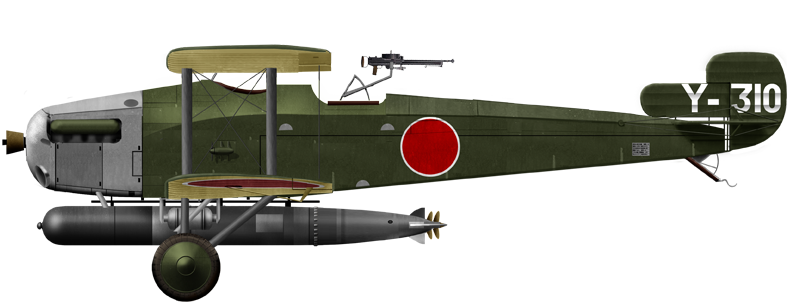
Mitsubishi B1M of the early type, first batch 1924
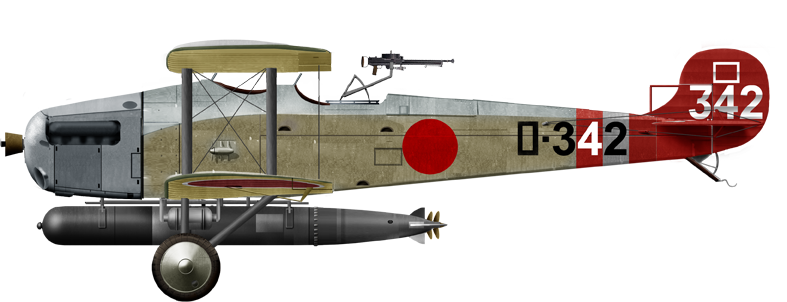
B1M-1 IJN onboard Hosho, 1926
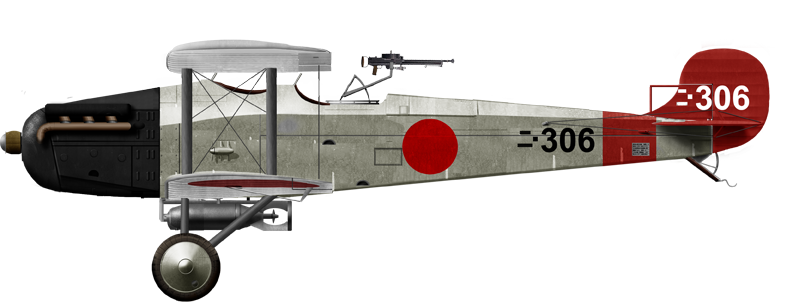
B1M-2 onboard IJN Kaga
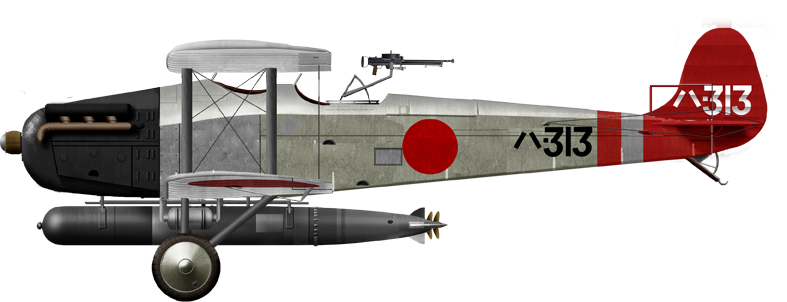
B1M-3, IJN Akagi 1929
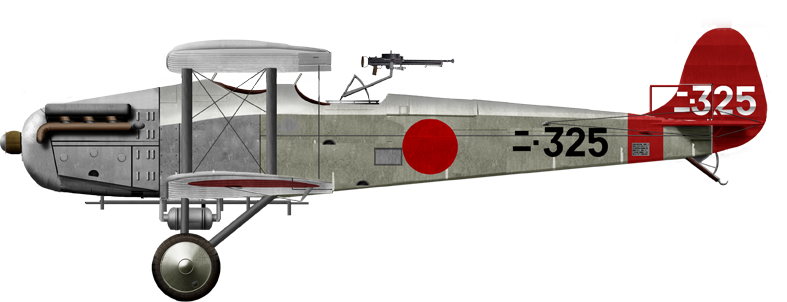
B1M-3 IJN Kaga, 1930
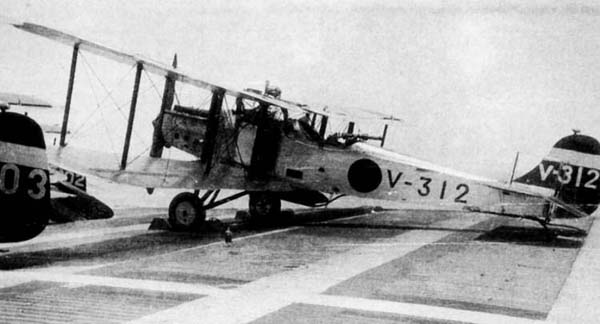
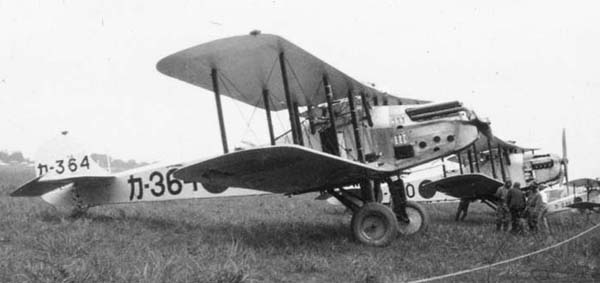
Mitsubishi B1M-3
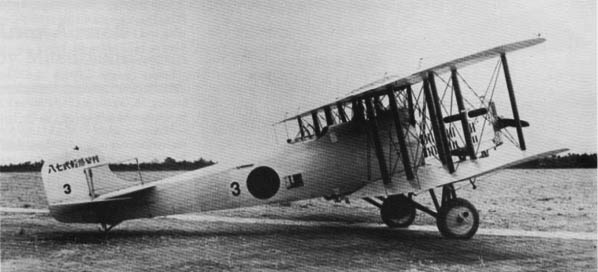
Mitsubishi Type 87 (2MB1)
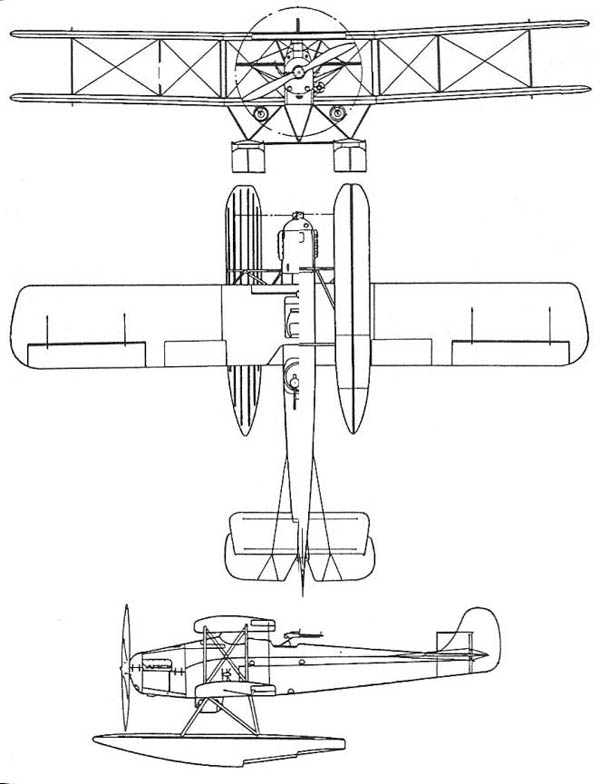
2MT4 Otori design scheme
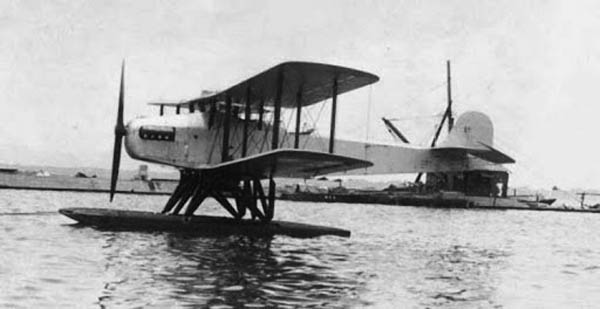
2MT4 Otori src airwar.ru

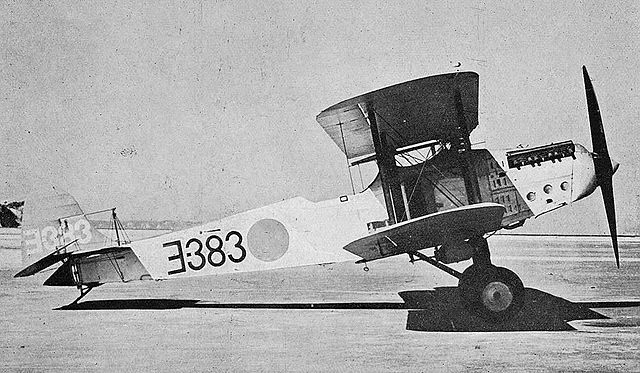
 Latest Facebook Entry -
Latest Facebook Entry -  X(Tweeter) Naval Encyclopedia's deck archive
X(Tweeter) Naval Encyclopedia's deck archive Instagram (@navalencyc)
Instagram (@navalencyc)





 French Navy
French Navy Royal Navy
Royal Navy Russian Navy
Russian Navy Armada Espanola
Armada Espanola Austrian Navy
Austrian Navy K.u.K. Kriegsmarine
K.u.K. Kriegsmarine Dansk Marine
Dansk Marine Nautiko Hellenon
Nautiko Hellenon Koninklije Marine 1870
Koninklije Marine 1870 Marinha do Brasil
Marinha do Brasil Osmanlı Donanması
Osmanlı Donanması Marina Do Peru
Marina Do Peru Marinha do Portugal
Marinha do Portugal Regia Marina 1870
Regia Marina 1870 Nihhon Kaigun 1870
Nihhon Kaigun 1870 Preußische Marine 1870
Preußische Marine 1870 Russkiy Flot 1870
Russkiy Flot 1870 Svenska marinen
Svenska marinen Søværnet
Søværnet Union Navy
Union Navy Confederate Navy
Confederate Navy Armada de Argentina
Armada de Argentina Imperial Chinese Navy
Imperial Chinese Navy Marinha do Portugal
Marinha do Portugal Mexico
Mexico Kaiserliche Marine
Kaiserliche Marine 1898 US Navy
1898 US Navy Sovietskiy Flot
Sovietskiy Flot Royal Canadian Navy
Royal Canadian Navy Royal Australian Navy
Royal Australian Navy RNZN Fleet
RNZN Fleet Chinese Navy 1937
Chinese Navy 1937 Kriegsmarine
Kriegsmarine Chilean Navy
Chilean Navy Danish Navy
Danish Navy Finnish Navy
Finnish Navy Hellenic Navy
Hellenic Navy Polish Navy
Polish Navy Romanian Navy
Romanian Navy Turkish Navy
Turkish Navy Royal Yugoslav Navy
Royal Yugoslav Navy Royal Thai Navy
Royal Thai Navy Minor Navies
Minor Navies Albania
Albania Austria
Austria Belgium
Belgium Columbia
Columbia Costa Rica
Costa Rica Cuba
Cuba Czechoslovakia
Czechoslovakia Dominican Republic
Dominican Republic Haiti
Haiti Hungary
Hungary Honduras
Honduras Estonia
Estonia Iceland
Iceland Eire
Eire Equador
Equador Iran
Iran Iraq
Iraq Latvia
Latvia Liberia
Liberia Lithuania
Lithuania Mandchukuo
Mandchukuo Morocco
Morocco Nicaragua
Nicaragua Persia
Persia San Salvador
San Salvador Sarawak
Sarawak Uruguay
Uruguay Venezuela
Venezuela Zanzibar
Zanzibar Warsaw Pact Navies
Warsaw Pact Navies Bulgaria
Bulgaria Hungary
Hungary

 Bundesmarine
Bundesmarine Dutch Navy
Dutch Navy Hellenic Navy
Hellenic Navy Marina Militare
Marina Militare Yugoslav Navy
Yugoslav Navy Chinese Navy
Chinese Navy Indian Navy
Indian Navy Indonesian Navy
Indonesian Navy JMSDF
JMSDF North Korean Navy
North Korean Navy Pakistani Navy
Pakistani Navy Philippines Navy
Philippines Navy ROKN
ROKN Rep. of Singapore Navy
Rep. of Singapore Navy Taiwanese Navy
Taiwanese Navy IDF Navy
IDF Navy Saudi Navy
Saudi Navy Royal New Zealand Navy
Royal New Zealand Navy Egyptian Navy
Egyptian Navy South African Navy
South African Navy






























 Ukrainian Navy
Ukrainian Navy dbodesign
dbodesign
I found a photo of this on line with the wings folded backward on a flight deck of an aircraft carrier. I’m trying to build this model kit with the wings in this position. Do you have any idea of where I can find a pic of this again or where do I separate the wing to have a close replica of this wing configuration . I notice that there is no identical structural separation in the top wing compared to the bottom wing
Hi Marc, the best i can find is this one, which clearly shows where it is https://imgur.com/OWKMtJa
Good luck for your project !
Please come back to showcase it here when done !
David